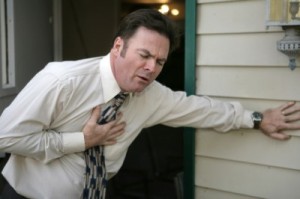Heart attack is the leading cause of death in the United States. Every year, an estimated 1.5 million Americans suffer from this disease. Heart attack happens when the flow of blood to the part of the heart muscle becomes blocked. As a result, the heart fails to get the oxygen and the part of the heart muscle starts to die.
Cause
Usually, heart attack is due to coronary heart disease or coronary heart disease. This is a condition where plaque, a waxy substance, builds up and clogs the coronary arteries. The arteries are where the blood flowing to the heart goes through.
Plaque build-up happens over many years. Eventually, a part of the plaque would break open inside the artery causing blood clot to form on the surface. When the clot grows big, it can completely block the flow of blood through the coronary artery.
In the event that the blockage is not treated immediately, a portion of the heart muscle starts to die.
Another cause of heart attack, albeit less common, is the severe tightening of a coronary artery. Called coronary article spasm, the disease happens when flow of blood through the artery is cut off.
Heart attacks are usually associated with or connected to various health problems like heart failure. This is condition wherein the heart is no longer capable of pumping blood sufficient enough to meet the needs of the body. Another condition closely linked to heart attacks is arrhythmias or irregular heartbeats.
Symptoms
 It is important that you know the symptoms of a heart attack. Treatment is most effective right after the symptoms manifest. Acting quickly at the first sign of a symptom can save you or someone else’s life, or minimize the damage to the heart.
It is important that you know the symptoms of a heart attack. Treatment is most effective right after the symptoms manifest. Acting quickly at the first sign of a symptom can save you or someone else’s life, or minimize the damage to the heart.
Chest pain and discomfort is one of the early warning signs of heart attack. The discomfort may last for a few minutes before going away. In most cases, it can be mistaken for a heartburn or indigestion.
People who suffer from a heart attack may also feel discomfort in the upper body first. Parts of the body like the arms, back, neck, shoulders, and jaw may experience pain or discomfort.
Another common symptom of heart attack is shortness of breath. In some patients, this was also the only symptom that they experienced prior to the heart attack. It usually occurs after doing a strenuous activity like exercising, and even while resting.
Aside from these three symptoms, other possible although less common symptoms of heart attack are nausea, vomiting, lightheadedness, and unexplained fatigue. Some patients also broke out in a cold sweat prior to the heart attack.
It is commonly perceived that heart attack begins with a crushing chest pain as usually shown in the movies. Yet the symptoms of this condition may differ from patient to patient. In extreme cases, some patients have already noticed several symptoms but were still surprised to learn that they have suffered from a heart attack.
How to Survive
In the event that you experience a heart attack alone, the first thing you have to do is call 911 or any emergency medical help hotline. Stop whatever you are doing and ask for medical help. For instance, if you are behind the wheel, pull to the side of the road and call 911.
Take an aspirin while waiting for the emergency help to arrive. Numerous studies have shown that aspirin, a blood-thinning medication, is the best drug to take during a heart attack.
When you get to a hospital, the medical staff may administer drugs like Lisinopril. This drug is prescribed mainly for high blood pressure but may also be used for heart attack.
Lisinopril is given to a heart attack patient within 24 hours.
After a Heart Attack
The good news is that many people have survived heart attacks and went on to live many years. The key is getting medical help quickly as drugs like Lisinopril can limit the damage to the heart muscle. Remember that the lesser damage that the heart muscle gets, the higher your chances for a better quality of life.
After a heart attack you will have to go through treatment for coronary heart disease to avoid this condition. You will likely be asked to make lifestyle changes like maintaining a healthy diet and becoming more physically active. You will also have to maintain an ideal weight and quit smoking. You may also be asked to take a cardiac rehabilitation program.
After a heart attack, most people can safely return to their normal day to day activities within a couple of weeks. Heart attack patients can start walking right away. The same goes for sexual activity. However talking with a doctor regarding a safe schedule for resumption of normal routine is not a bad idea especially for patients who are worried about another possible heart attack.
Share This